Minapharm possess a competitive advantage in addressing gene-to-market approaches, utilizing very complex technologies such as the genetic modification of cell lines to express the biologic API as well as the culturing of the cells and their purification using advanced scientific methods.
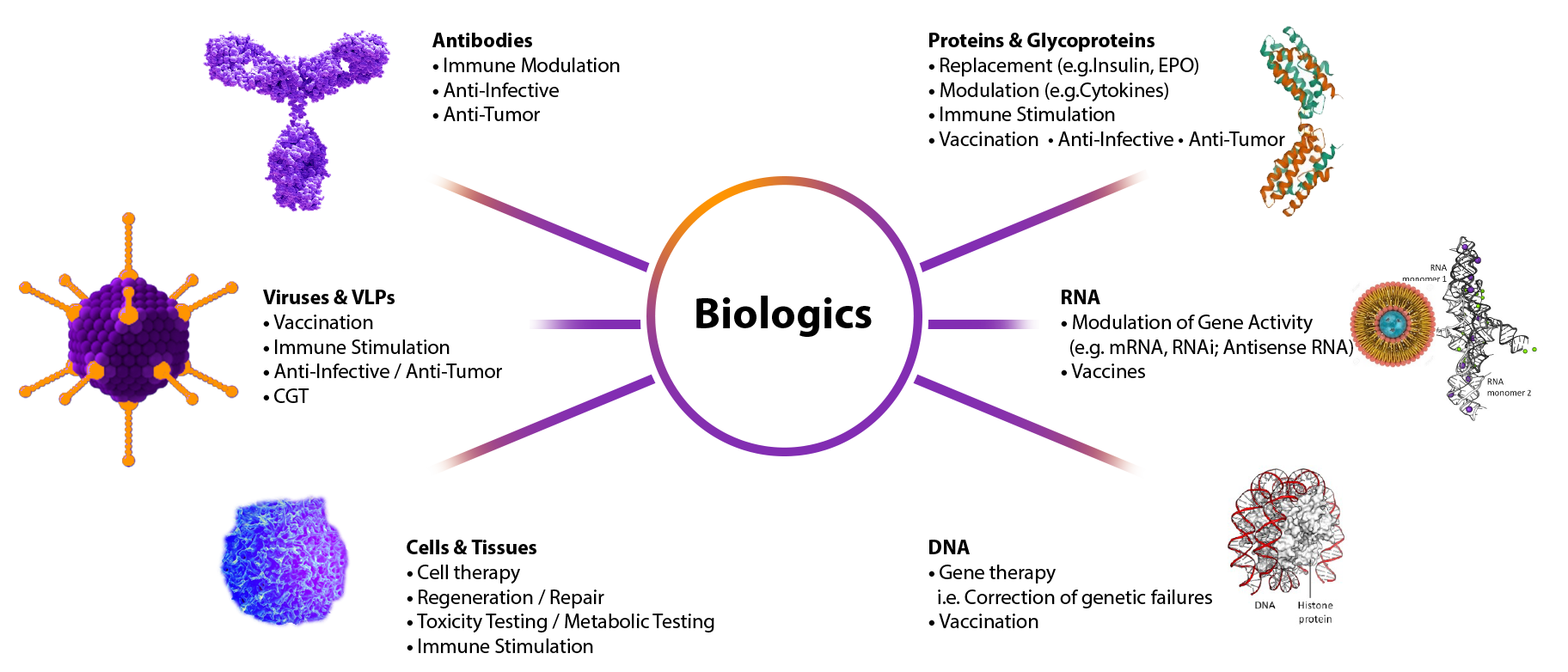
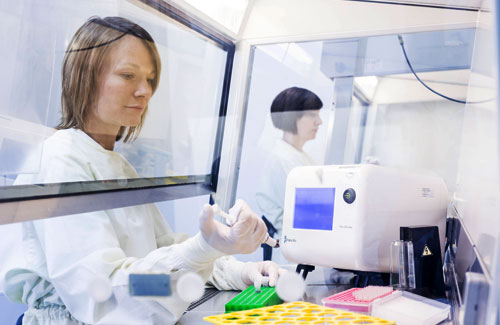
Through its daughter company, ProBioGen AG, Minapharm has access to a variety of innovative and proprietary technologies, improving and simplifying the development of biological drugs and viral vector cell lines. This positions Minapharm at the forefront of fast and dynamically evolving industry.
Site directed genomic integration of transgenes heavily reduces the cell clone screening efforts and development timelines, modulating the potency of antibodies through trimming of glycosylation patterns and the increase of biopharmaceutical cell line productivities are among those accessible game changing technologies.
The artificial lymph node (ALN) allows the testing of a products immunogenicity and functionality in vitro.
Various proprietary viral technologies augment the productivities of viral vectors or vaccines.
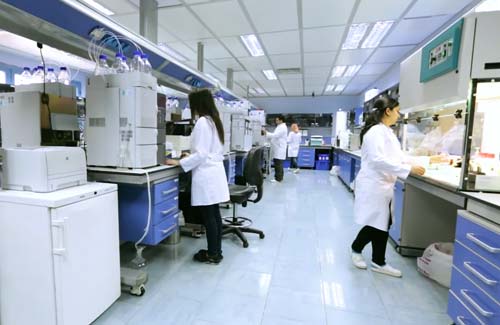
The R&D department in Minapharm based on state of the art equipment, technologies, is one of the first biopharmaceutical research centers in the MENA region, established in 2006.
R&D labs are continuously upgraded with latest technologies to support the development of pipeline products, where the last few years has seen a significant expansion in its footprint, facilities and capabilities.
The R&D department is structured based on a highly qualified and expanding team of selected personnel from different scientific fields with a very high degree of motivation to drive highly complex projects, supported with intimate knowledge of international regulatory requirements and working hand-in-hand with a global team.
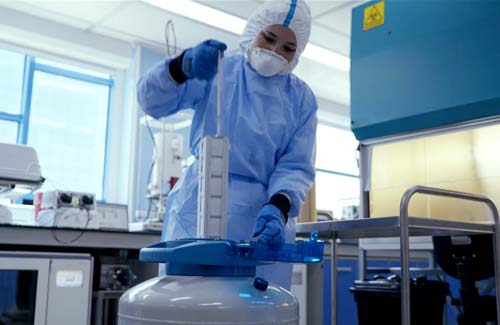
Well established and characterized high-quality cell lines of different expression systems are used for the development of pipeline products.
Cell lines are fully characterized and EU regulatory-compliant for clinical trials and commercial production.
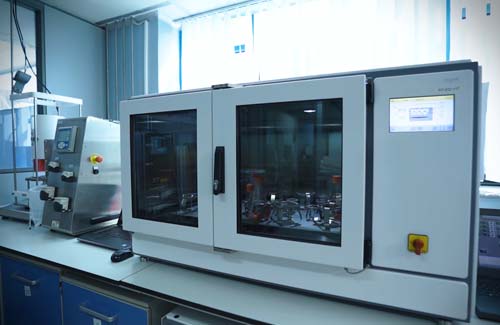
R&D upstream labs are equipped with state-of the-art technologies that includes a bioreactor platform from 250 ml to 50 L in scale. Parallel small scale glass bioreactors for screening of cultivation parameter as well as up to date single use bioreactor technology resembling manufacturing scale to enable smooth process upscale and transfer to the production scale are intregrated.
The upstream process development aims to achieve a cost effective and upscalable process complying with the predefined quality target product profile.
The lab is also supported with up to date technologies for in process control for process follow up and checking cell viability, morphology, monitoring nutrients consumption that are needed during process development.
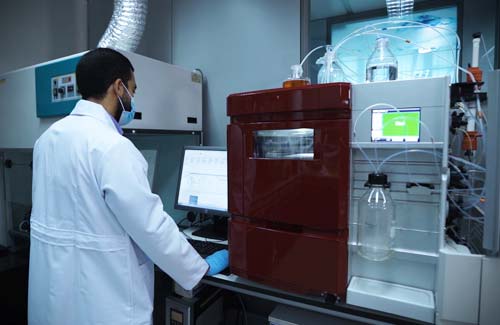
The downstream lab in R&D is equipped with the latest purification technologies which support the development of all pipeline products. It includes up to date liquid chromatography systems and tangential flow filtration of different scales. Different types/sizes of lab scale chromatography columns are available for the purification process development.
The goal during downstream development is to reach the most economic and up-scalable process and achieve the target product profile.
Recently the innovative continuous chromatography technology was introduced in the downstream lab used to increase the process productivity.
The above activities are supported by the protein characterization department that analyses the process control samples, for monitoring of the critical quality attributes during process optimization and scaling.
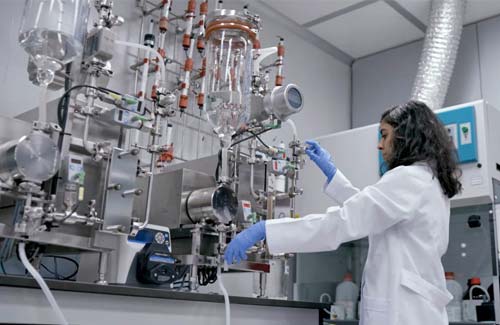
Protein characterization labs in R&D are equipped with state-of-the-art equipment supporting a wide array of analytical techniques for complete and thorough analysis and deep investigations of critical quality attributes of pipeline products.
Equipment include highly complex automated instruments such as HPLCs, equipped with different types of detectors such as UV, fluorescence, refractive index and evaporative light scattering, for covering different chromatography methods for protein quantification and profiling, in addition to other state of the art equipment like capillary electrophoresis which offers an automated solution with fast and reproducible results compared to classical SDS-PAGE gel electrophoresis.
A fully furnished and dedicated lab is established for immunoassays and in-vitro functional assays that are needed to be performed throughout the process development in order to ensure the product safety and efficacy.
LC-MS is one of the latest introduced methodologies in R&D labs which further widens the scope of applications including analysis of product primary structure and post-translational modifications, which play a critical role during process development.
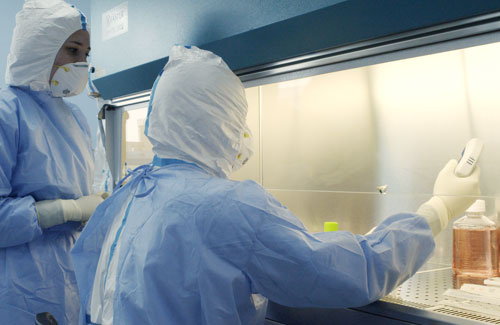
Latest technologies are applied in R&D for formulation development assessing the impact of formulation variables like excipients, buffers and delivery system on the stability and performance of pipeline products under development in their different forms, including assessment of extractables and leachables.
Long term and accelerated stability studies are conducted in R&D for pipeline products under development to ensure final developed product meets intended shelf life, with support of extrapolation algorithms. Dedicated state of the art climate chambers with monitored control of temperature and humidity are used for such studies. In addition, photostability studies are conducted using dedicated photostability chambers. These studies are supported with a wide range of state of the art analytical methodologies, extending to a group of physicochemical methods to support this scope including dynamic light scattering and light obscuration.
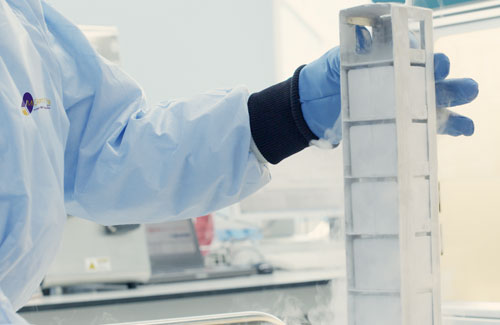
The biopharmaceutical system has been yielding leaps in quality and speed using innovations and adoptions of process technologies into commercial processes delivering therapies to patients enhancing patient experience and global health-care.
In the intricate process of biopharmaceutical production, several key stages are meticulously navigated to ensure the development of a robust and high-yielding cell line. The initial phase involves cell line development, wherein genetic engineering techniques are employed to establish a stable and productive cell line. Subsequently, cell culture and fermentation are executed on a smaller scale, with a notable shift towards the adoption of single-use technology in biopharmaceutical manufacturing.
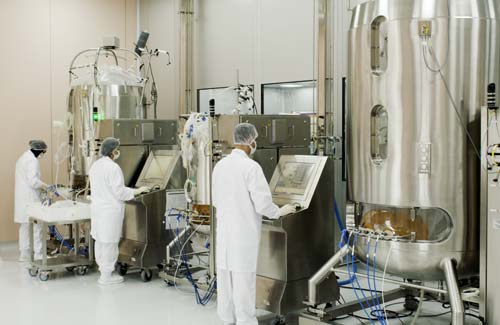
The subsequent stage, purification, is dedicated to isolating the biopharmaceutical from cellular components and impurities. This task is achieved through the implementation of chromatography, filtration, and various separation techniques. The journey continues with formulation and fill/finish to the appropriate dosage form.
Quality control (QC) assumes paramount importance in the process, employing analytical methods to rigorously confirm the identity, purity, and potency of the biopharmaceutical as the production cycle progresses.
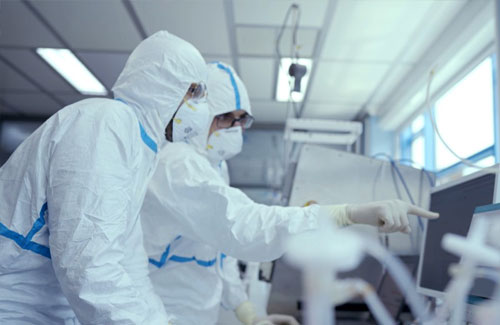
The exciting journey of giving a birth to a new biopharmaceutical involves a lot of trials and studies till reaching the end user. After developing a consistent process complying with pre-designed critical quality attributes, pre-clinical studies are conducted in animals and/or in vitro for early testing of the drug safety and efficacy.
Identical technologies as in commercial manufacturing and flexible adoptable scales from 50L to 2000L, depending on the clinical demand, are used for the production of materials for use in early-phase clinical trials to evaluate the safety, tolerability and preliminary efficacy of a new therapeutic as well as scalability to achieve cost effective process.
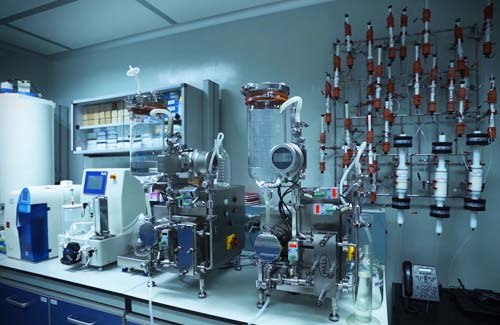
The seamless integration of these stages underscores the comprehensive nature of biopharmaceutical development, where precision and innovation converge to yield potent and high-quality therapeutic agents.
Manufacturing of clinical materials under GMP conditions is then preceded and released to be used in clinical studies. EU approval is then granted for the clinical trial protocol as well as for the clinical material manufacturing site.
Upon proven clinical safety and efficacy, the marketing authorization dossier is submitted for approval by regulatory agencies.
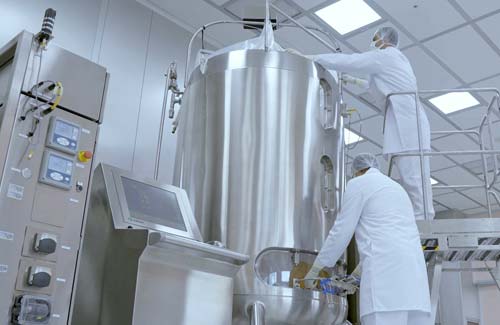
After product marketing authorization, end to end commercial manufacturing is the next stage in the industry of bio-manufacturing at Minapharm, under firm GMP environment covering the entire process starting from upstream to downstream operations to assure production and delivery of safe and efficient drug product.
Technical innovations are helping frame commercial strategies for cell culture processes. Bioreactors available in the market now have modular designs enabling adaptability to a variety of molecules, applications and multi-drug processes.
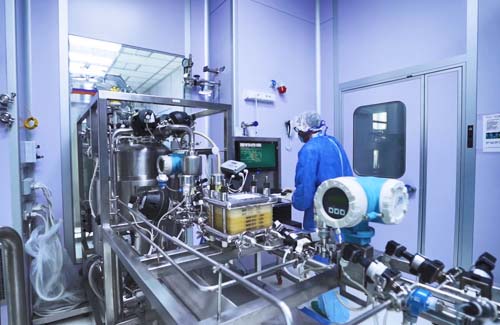
At Minapharm, scaling up involved a meticulous transition across various stages and technologies. The upstream process advances to 200L, 1000L and 2000L bioreactors tailored to ensure market demand is met while ensuring high-quality, purity and regulatory compliance. Maintaining product integrity is instrumental in large-scale purification. Automation and precise control over purification parameters, sophisticated chromatography platforms have proven instrumental during large-scale purification and GMP manufacturing. Ultimately, this comprehensive approach led by Minapharm advances innovations to benefit both healthcare and society at large.
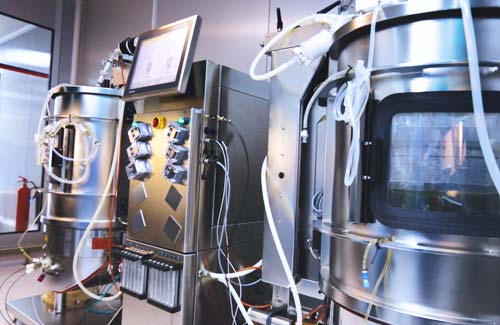
Evolution of single-use technologies is among the most important developments of bio manufacturing. Single use technologies stand for customer-focused solutions surrounding single-use systems where multimodal production is provided, output is enhanced and changeover procedures are expedited. Single use technologies have revolutionized the industry; linked to their unique ability to enhance flexibility, reduce investment and limit operational costs.
Minapharm had adopted single-use technology in both up-stream bioreactors and down-stream kits, membranes and tools to ensure excellent and reproducible growth for the most sensitive cell lines and unprecedented assurance of supply, in addition to eliminating the need to clean or autoclave and reduces the time, labor and expense associated with traditional stainless-steel systems.
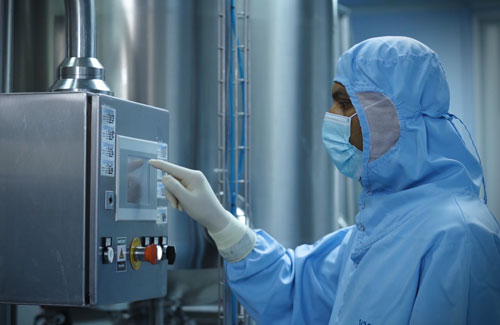
Digital transformation in biopharmaceutical manufacturing involves leveraging advanced digital technologies to enhance efficiency, agility, and innovation throughout the entire manufacturing process. The integration of Information Technology (IT) plays a crucial role in achieving this transformation in the following aspects:
Supply Chain Visibility (Automated Material Requirements Planning (MRP) system); to enhance overall operational efficiency through automated data analysis and real-time insights and offering proactive decision-making capabilities by effectively minimizes stock outs and optimizes resource utilization.
Electronic Document Management System; to ensure data integrity and seamless adherence to regulatory requirements in our manufacturing practices.
Manufacturing execution system (MES) and Computerization; intricately manage and oversee the production lifecycle by enabling real-time monitoring and control of critical processes. Additionally, integration of predictive maintenance strategies revolutionizes our approach to equipment maintenance to enhance proactive identification of potential issues, schedule maintenance in advance, minimize downtime and optimize operational efficiency.
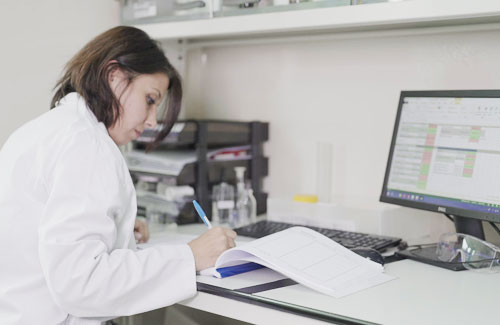
Data Integration and Lab management system; this integration of sophisticated data analytics empowers us to make informed decisions, streamline processes, and uphold stringent quality standards throughout our manufacturing workflows.
Automation and Robotics; the incorporation of automated systems and robotics in our manufacturing processes represents a pivotal shift towards increased efficiency and accuracy. Beyond reducing reliance on manual labor, these advancements significantly elevate precision and consistency in our operations. This strategic integration aligns with our pursuit of optimizing manufacturing capabilities while ensuring high-quality outputs.
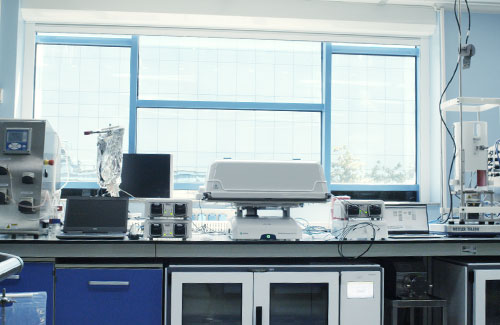
As an innovative biopharmaceutical corporate Minapharm firmly commits to operate
Integrated Management System in accordance to the requirements of cGMP,
ISO9001:2015, ISO14001:2015, ISO45001:2018, PAS99:2012, contractual requirements,
applicable regulations and other requirements.
Minapharm advocate a policy to sustain and improve the provision of innovation and
excellence in providing the most up-to-date affordable biological products by building and
implementing state-of-the-art technology aligned with recent advances in information and
with the highest standard of quality.
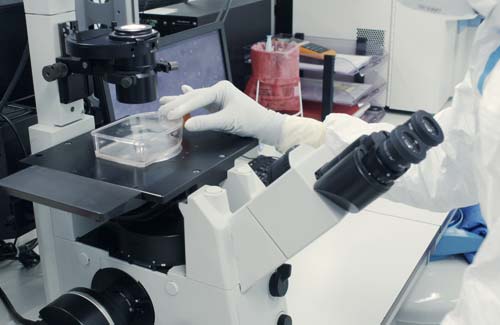
Maintaining and continually upgrading robust Quality Management System in compliance with EU standards, is an integral part of company culture along product life cycle from development till commercialization in a proactive manner ensuring delivery of safe and effective products to the patients.
Adopting “Quality by Design” approach and systematic technology transfer in order to assure knowledge management and to eliminate human variation during manufacturing process design.
Quality Management System is led by the Quality Unit, which is independent of the manufacturing unit; ensuring effective implementation of QMS via internal auditing, effective oversight for day to day operation and critical process parameters monitoring in the manufacturing shop floor, in conjunction with Quality Control activities that test product quality attributes.
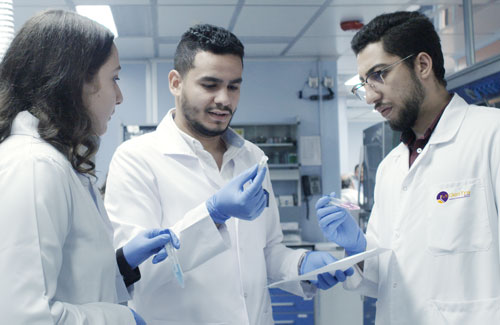
Minapharm values the diverse contribution of employees and strives to be recognized as an initiative specialized organization that provides extra ordinary value to the customers, community, shareholders and other relevant interested parties.
Personal competence & qualification as well as process design guarantee that the business is conducted in a manner that conserves the environment; prevents pollution, injury and ill health and complying with laws, regulations and other requirements.
Our company growth strategy is market driven by applying the highest standards of integrity ensuring customer satisfaction accompanied by an environment-friendly production system and providing safe workplace.